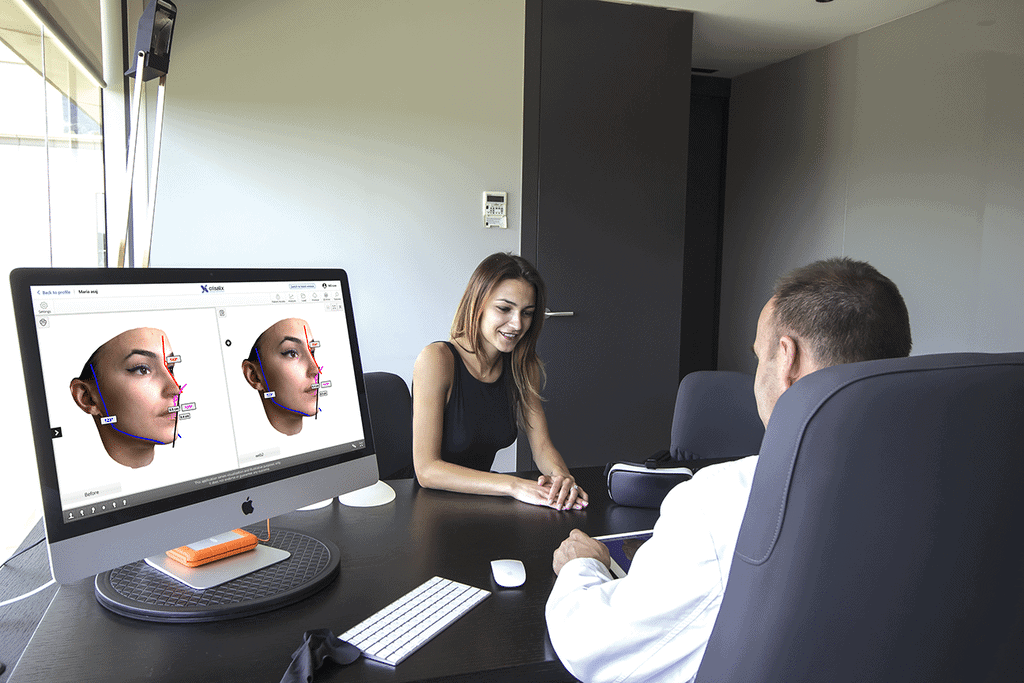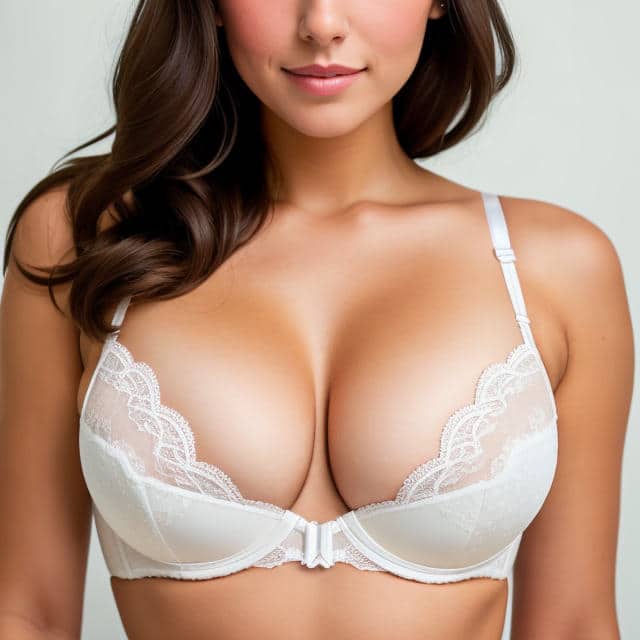The Role of Augmented Reality in Transforming Cosmetic Consultations
Augmented reality in cosmetic consultations is changing the game. Traditional methods often leave clients guessing about how products will look, unlike virtual beauty consultations and virtual reality makeup that enhance patient consultations with beauty tools. Now, with AR technology, clients can visualize makeup and skincare products on their own faces instantly. This innovation bridges the gap between desire and reality.
No more trial and error or relying solely on photos in this era of virtual reality makeup and dermatology. Clients gain confidence in their choices, leading to better satisfaction. Beauty professionals can provide tailored recommendations without the guesswork. The future of beauty is here, and it’s interactive. Embrace this tech-driven approach for a seamless experience that enhances both client trust and engagement.
Key Takeaways
- Augmented reality (AR) can significantly improve cosmetic consultations by allowing customers to virtually try on makeup and hairstyles before making a purchase.
- Beauty brands should consider integrating AR technology into their online platforms to enhance customer engagement and satisfaction.
- Using AR for skin analysis can provide personalized product recommendations, making the shopping experience more relevant for individual needs.
- Combining AR with artificial intelligence (AI) can lead to even better results, as AI can analyze customer preferences and suggest tailored solutions.
- Staying updated on future trends in AR will help brands remain competitive in the rapidly evolving cosmetics industry.
- Customers should take advantage of AR tools offered by brands to experiment with different looks and find what works best for them.
Understanding Augmented Reality in Cosmetics
Definition of AR
Augmented reality (AR) is a technology that blends digital content with the real world. It enhances what you see, hear, and feel by adding layers of information. This can include images, sounds, or other data. In the cosmetic industry, AR allows customers to visualize beauty products before applying them.
AR uses facial imaging systems to analyze a person’s features. This technology captures the structure of the face. It identifies areas like skin tone, texture, and contours. With this data, AR creates a realistic representation of how different cosmetic products will look on the user.
Overlays in Consultations
AR overlays digital information onto the real world during beauty consultations. Customers can try on makeup virtually without physical application. For instance, using a reality makeup mirror, clients can see how lipstick or eyeshadow looks on their face instantly.
This technology makes consultations interactive and engaging. Clients can experiment with various colors and styles. They can adjust shades and textures as they wish. This leads to more informed decisions about purchases.
Visualizing Cosmetic Outcomes
AR plays a crucial role in visualizing potential cosmetic outcomes before actual treatment. Many cosmetic procedures require significant investment and commitment. Clients often hesitate due to uncertainty about results.
With AR technologies, users can simulate effects of treatments like fillers or Botox. They can see how these changes would appear on their own faces. This process helps to build confidence in their choices.
For example, a client considering lip fillers can use AR to see fuller lips instantly. The simulation shows not just the size but also how it fits their overall facial structure.
Benefits of AR in Cosmetics
- Informed Choices: Clients make better decisions based on visual feedback.
- Reduced Anxiety: Seeing potential results eases fears about procedures.
- Engagement: Interactive experiences enhance customer satisfaction.
These benefits illustrate why AR is becoming essential in cosmetic consultations.
Future of AR in Cosmetics
The future looks bright for augmented reality in cosmetics. As technology advances, expect even more realistic simulations. Companies are investing heavily in 3D imaging and facial applications to improve accuracy.
In coming years, AR could integrate with other technologies too. For instance, combining AI with AR could personalize recommendations further.
Benefits of AR in Beauty Consultations
Decision-Making
AR technology enhances decision-making for clients. It provides realistic previews of cosmetic procedures. Clients can visualize how different treatments will look on their bodies. This helps them make informed choices. For example, a person considering lip fillers can see a simulation of the results before committing. The clarity offered by AR reduces the chance of regret after the procedure.
Clients also appreciate being able to explore various options. They can try different looks without any physical alterations. This visual feedback is crucial in the beauty industry. It allows clients to feel confident in their decisions.
Customer Satisfaction
Personalization plays a key role in customer satisfaction. AR offers tailored experiences during virtual beauty consultations. Each client receives attention based on their unique needs and preferences. They can interact with the technology to find what suits them best.
For instance, a client may want to experiment with different hair colors or makeup styles. With AR, they can see how these changes would appear on them instantly. This interactive experience builds trust between clients and beauty professionals. Satisfied clients are likely to return for more services and recommend them to others.
Reducing Anxiety
Uncertainty often leads to anxiety about cosmetic procedures. AR helps mitigate this concern by allowing clients to see potential results beforehand. By visualizing outcomes, clients feel more secure in their choices.
Many individuals fear that a procedure might not meet their expectations. AR alleviates this worry by providing a clear picture of what to expect. For example, someone contemplating rhinoplasty can view a simulation of their new nose shape before surgery. This preview can ease concerns and clarify expectations.
Moreover, AR creates a safe space for exploration. Clients can experiment with various looks without any commitment. This freedom encourages them to ask questions and engage more openly with beauty experts.
How AR Enhances Customer Experience
Immersive Visualization
Augmented reality (AR) transforms how customers interact with cosmetic consultations. It engages customers through immersive and interactive visualization tools. These tools allow clients to see how products will look on their skin before making a purchase.
For example, AR apps can overlay virtual makeup on a user’s face in real-time. This gives users a clear idea of colors and styles that suit them best. This experience makes consultations more engaging. Customers feel like they are part of the process.
Personalized Approach
AR also offers a personalized approach to beauty consultations. Each customer has unique needs and preferences. AR technology tailors consultations to these individual requirements.
Clients can try different looks based on their skin tone and facial features. They can experiment with various shades of lipstick or eyeshadow without any mess. This customization helps customers feel valued and understood. They appreciate when brands recognize their individuality.
Trust and Transparency
Fostering trust and transparency is crucial in the beauty industry. AR helps demonstrate potential outcomes in real-time. Customers can visualize how a product will perform before buying it.
This feature builds confidence in the brand and its products. For instance, if a customer is unsure about a foundation shade, AR allows them to see how it blends into their skin tone instantly. This capability reduces the fear of making a wrong purchase decision.
Real-Life Applications
Many brands have adopted AR technology successfully. Sephora launched its Virtual Artist app in 2016, allowing users to try on makeup virtually. The app uses facial recognition to apply products accurately, enhancing the patient experience during consultations.
L’Oréal introduced an AR tool called ModiFace, which lets users test different hair colors online. These innovations showcase how AR can elevate customer experiences by providing practical solutions.
Role of AI in Cosmetic Consultations
Automated Analysis
AI tools automate skin analysis and diagnosis. They use advanced algorithms to assess skin conditions accurately. This technology provides precise insights into a patient’s skin health. Dermatologic consultations benefit from this automation. It reduces human error and enhances the accuracy of assessments.
AI analyzes factors like pigmentation, texture, and elasticity. These details help identify specific skin issues. For example, it can detect conditions such as acne or rosacea quickly. With AI-driven tools, dermatologists can focus on treatment rather than initial assessments.
Treatment Planning
Data-driven insights enhance treatment planning significantly. AI gathers information about various cosmetic procedures. It compares patient data with existing databases to suggest optimal treatments. This approach allows for personalized recommendations tailored to individual needs.
For instance, if a patient seeks facial procedures, AI can recommend the most effective options based on their skin type and condition. These recommendations consider both efficacy and safety. The result is a more streamlined consultation process that prioritizes patient outcomes.
Streamlined Consultations
AI also streamlines consultations by reducing time spent on manual assessments. Traditional methods often require lengthy examinations and discussions about symptoms. With automated analysis, patients receive quicker evaluations.
This efficiency benefits both patients and dermatologists. Patients appreciate shorter wait times and faster results. Dermatologists can see more patients without sacrificing quality care. In 2021, studies showed that clinics using AI tools reduced consultation times by up to 30%. This change allowed for increased patient volume while maintaining high satisfaction rates.
Enhanced Patient Experience
Integrating AI into consultations improves the overall patient experience. Patients feel more engaged when they see data-driven results during their consultations. They trust the recommendations because they are backed by technology.
Providers also gain insights into patient preferences through AI analytics. Understanding what patients desire helps tailor services better. For example, if many patients express interest in non-invasive procedures, clinics can adjust their offerings accordingly.
Future Trends
The future of cosmetic consultations looks promising with AI advancements. Continuous improvements in machine learning will lead to even better diagnostic tools. As technology evolves, so will its integration into dermatologic practices.
Combining AI and AR for Better Results
Enhanced Simulations
AI tools enhance augmented reality (AR) by creating comprehensive simulations. These simulations allow patients to visualize potential outcomes of cosmetic procedures. For instance, patients can see how different treatments affect their appearance over time. Advanced aging simulation helps in understanding the long-term effects of treatments. This visual aid improves patient comprehension and decision-making.
The combination of AI and AR creates a more immersive experience. Patients engage with their treatment plans more effectively. They can adjust variables in real-time to see various results. This technology reduces uncertainty, leading to better satisfaction with treatment choices.
Customized Treatment Plans
Combining these technologies allows for precise and customized treatment plans. AI analyzes individual patient data to recommend tailored procedures. It considers factors like skin type, age, and desired outcomes. This personalized approach increases the likelihood of successful results.
For example, if a patient seeks wrinkle reduction, AI can suggest specific fillers or laser treatments. AR then shows how these options would look on the patient’s face. Such detailed planning aids both the practitioner and the patient in achieving their goals.
Improved Consultation Accuracy
The synergy of AI and AR significantly improves consultation accuracy. AI systems score various aspects of a patient’s skin during assessments. These scores help practitioners identify areas needing attention. The integration of real-time data enhances decision-making during consultations.
Practitioners can rely on accurate simulations to explain procedures better. Patients gain confidence when they understand what to expect from their treatments. This clarity leads to improved treatment outcomes and higher patient satisfaction.
Industry Adoption
The adoption of AI and AR technologies is growing in the cosmetic industry. Many clinics now integrate these tools into their consultation processes. As technology advances, more practitioners recognize the benefits of these systems.
Training programs are emerging to educate professionals about using AI and AR effectively. With proper training, practitioners can leverage these tools for optimal results. This shift reflects a broader trend toward incorporating technology in healthcare.
Virtual Makeup and Hair Styling with AR
AR Applications
AR applications transform how people experience beauty products. They enable virtual try-ons for makeup and hairstyles. Users can see how different shades of lipstick or eyeshadow look on their faces in real time. This technology uses advanced software to create realistic images. Customers can experiment with various styles without any physical application.
Experimentation
These tools allow individuals to explore their looks freely. Users can mix and match different beauty products easily. They can try bold lip colors or unique hairstyles without the commitment. This freedom encourages creativity and personal expression. Many find it exciting to see themselves in new styles instantly.
Retail Enhancement
Retail experiences improve significantly with AR technology. Virtual beauty consultations provide a risk-free platform for style exploration. Shoppers can test products virtually before buying them. This reduces the chances of dissatisfaction after purchase. Companies like Hairmetrix offer specialized simulations for hair styling. These tools help customers visualize changes to their appearance.
Customer Engagement
Engagement levels rise when customers can interact with products virtually. AR beauty apps keep users entertained while shopping. They offer a fun way to discover new trends and styles. Many brands now incorporate these technologies into their marketing strategies. This shift creates a more immersive shopping experience.
Aesthetic Revolution
The rise of augmented reality marks a revolution in the beauty industry. It changes how consumers approach makeup and hairstyling. Traditional methods often limit experimentation due to time and cost constraints. With AR, anyone can access high-quality virtual makeup tools at home.
Benefits of Virtual Makeup Tools
- Convenience: Users can try on looks anytime, anywhere.
- Cost-effective: No need to buy multiple products for trial.
- Safe: No mess or cleanup required after experimenting.
- Variety: Access to countless styles and colors instantly.
Real-Time Simulations
Real-time simulations enhance the user experience further. These simulations reflect immediate changes as users adjust their selections. Whether changing lipstick shades or trying out new hairstyles, results appear instantly on-screen.
Areas of Application
The applications of AR in beauty extend beyond just makeup and hair styling. They include skincare consultations where users can assess their skin type and needs through virtual tools. This comprehensive approach helps consumers make informed decisions about products that suit them best.
AR for Skin Analysis and Recommendations
Skincare Analysis
AR technologies can significantly enhance skincare analysis. These tools allow users to visualize their skin conditions in real-time. High-resolution imaging captures details like texture, pigmentation, and blemishes. This level of detail helps in making accurate skin condition assessments.
Dermatologists can utilize AR to create a comprehensive individualized skin profile. This profile includes the patient’s specific skin needs and concerns. With this information, they can tailor recommendations that suit each person’s skin type.
Personalized Recommendations
Personalized skincare recommendations become more effective with AR. Users can receive suggestions based on their unique skin health analysis. Algorithms analyze images taken through AR applications. These algorithms provide insights into the best products and routines for the user’s skin.
For instance, if a user has dry skin, the app may recommend hydrating serums or moisturizers. If acne is a concern, products with salicylic acid might be suggested. This targeted approach ensures that the skincare regimen aligns with skincare goals.
Digital Skin Analysis
Digital skin analysis plays a crucial role in modern dermatological consultations. AR allows for real-time tracking of changes in skin over time. Dermatologists can compare past images with current ones to assess improvements or new issues.
This ongoing assessment is vital for maintaining optimal skin health. Regular check-ins help adjust the skincare regimen as needed. Patients can see their progress visually, which enhances motivation and commitment to their skin care needs.

AI Skin Analysis Scores
AI-driven tools generate skin analysis scores based on various factors. These scores evaluate aspects like hydration levels, pore size, and overall texture. Such metrics guide users in understanding their skin’s condition better.
Patients can also use these scores during online skin consultations with their personal dermatologist. The integration of AI provides an additional layer of accuracy in treatment plans. It ensures that both dermatologists and patients are on the same page regarding expectations.
Critical Skincare Insights
AR provides critical insights into skincare that traditional methods cannot match. Advanced imaging techniques reveal underlying issues that may not be visible to the naked eye. For example, UV damage or early signs of aging can be detected early.
This technology empowers users to take proactive steps toward healthier skin. By addressing issues before they escalate, patients can maintain better overall skin health.
Future Trends in AR for Cosmetics
Increased Adoption
AR technology is set to become a standard in beauty consultations. More brands will use it to enhance customer experiences. This shift will allow users to visualize products before purchasing. Many consumers already prefer virtual try-ons over traditional methods. They find it convenient and engaging. The cosmetic industry will likely see a rise in skincare advancements due to this trend.
Hardware and Software Advancements
Future developments in AR hardware and software will improve realism. New devices will offer better graphics and faster processing. These improvements will create lifelike simulations of skin textures and colors. Users can expect more accurate results when trying on makeup or skincare products. Enhanced algorithms will analyze individual skin types more effectively. This leads to personalized recommendations that align with each user’s aesthetic goals.
Integration with Emerging Technologies
The integration of AR with other technologies is on the horizon. Combining AR with artificial intelligence (AI) will provide deeper insights into skin conditions. AI can analyze data from various sources, offering tailored solutions for skin issues like aging. This collaboration will lead to a more comprehensive approach to cosmetic dermatology.
Wearable devices may also play a role in this evolution. Smart glasses could allow users to receive real-time feedback during consultations. Imagine walking into a salon, wearing smart glasses, and seeing suggested products right on your face. Such innovations would revolutionize the way people approach beauty.
Medical Aesthetics Application
AR’s future also spans the realm of medical aesthetics. Surgeons can use AR for pre-surgery consultations, showing patients potential outcomes. This visualization helps manage expectations and enhances decision-making processes. Patients can see how treatments may alter their appearance before committing.
As AR technology advances, it will become essential in both cosmetic and medical fields. The focus will shift towards creating holistic beauty solutions that address various concerns simultaneously.
Pensamientos Finales
Augmented reality is transforming cosmetic consultations. You can visualize products on your face and get personalized recommendations. This technology not only enhances your experience but also builds confidence in your choices. With the integration of AI, the possibilities are endless.
As you explore this exciting world, consider how AR can elevate your beauty routine. Stay ahead of the trends and embrace these innovations for a better shopping experience. Dive into augmented reality today and see the difference it makes in your cosmetic journey. Your beauty transformation awaits!
Frequently Asked Questions
What is augmented reality (AR) in cosmetic consultations?
Augmented reality (AR) in cosmetic consultations allows customers to visualize makeup and beauty products on themselves through digital overlays, enhancing the shopping experience without physical application.
How does AR benefit beauty consultations?
AR provides instant visual feedback, enabling customers to try multiple looks quickly. This technology enhances decision-making, reduces returns, and increases customer satisfaction.
Can AR improve customer experience in cosmetics?
Yes, AR creates an interactive and personalized shopping experience. Customers can experiment with products virtually, making them feel more engaged and confident in their choices.
What role does AI play in cosmetic consultations?
AI analyzes customer preferences and skin types, offering tailored recommendations. It enhances AR experiences by ensuring that suggestions align with individual needs for a more personalized approach.
How do AI and AR work together in cosmetics?
Combining AI and AR allows for smarter virtual consultations. AI gathers data while AR visualizes it, creating a seamless experience that helps customers find their ideal products efficiently.
Is virtual makeup application accurate with AR?
Yes, AR technology uses advanced algorithms to simulate realistic makeup application. It adjusts to facial features, ensuring that users see an accurate representation of how products will look.
What are future trends for AR in cosmetics?
Future trends include enhanced personalization through data analytics, improved realism in virtual applications, and broader integration with e-commerce platforms, making online shopping even more immersive.






